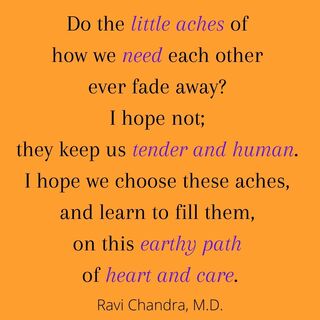Relationships
Bad Art Friend: Discontent With Parasociality
A recent New York Times article explores difficult areas of relatedness.
Posted October 6, 2021 Reviewed by Jessica Schrader

The recent New York Times Magazine article “Who is the Bad Art Friend?” has been burning up my Twitter timeline. It is a gripping, true-life account of relationships gone bad. To sum up a very complex story, Dawn Dorland, a white writer, donated a kidney to an unrelated donor as a "non-directed donation" — undoubtedly a very altruistic act. She was involved in the GrubStreet writing center community while in Boston and after she moved away, and later invited "two dozen far-flung friends and family" to a private Facebook group she created to get support for her upcoming nephrectomy and recovery. She posted about her act, and encouraged others to consider becoming donors. She received support before the surgery, but became unsettled over time by one particular writer's seeming avoidance. She emailed Sonya Larson (a multiracial Asian American and a prominent writer and leader in the GrubStreet community), to ask her why she hadn’t reacted to her post (though it seemed that Larson had indeed noted the post.) She got a less-than-satisfying reply, and then it all kicked up many, many notches. It turns out that Larson’s silence and avoidance was a cover for a caustic writers’ group chat that took issue with Dorland, and the fact that Larson was “inspired” by Dorland’s life to write a story about an Asian American woman beset by a woman with a White Savior complex. There is an outstanding question of whether Larson plagiarized Dorland's letter to the kidney recipient, which she had posted to the group. Dorland felt exploited, and likely, shamed, bullied, and scapegoated. Dorland went on quite a trip of finding some kind of justice, as she defined it, and it would seem, clarity, in this mess, and it seems Larson has also initiated quite a trip of defense as well, per the accounts I've read. Larson initiated legal actions in 2019, and Dorland brought a countersuit. (Please note I am summarizing a very long and complicated story, and perhaps eliding important details. Several articles have been published about this in recent days, and more likely to come. This seems intense, but also a really insider-baseball-like Rashomon to this observer. I hope my words can bring something new.)
Many writers on my feed have really come out strongly against Dorland. They identify with Larson feeling harassed and intimidated by Dorland’s actions. They suggest that Dorland holding Larson responsible for her difficult emotions smacks of requiring co-dependency. They also have opinions about the idea of fiction drawing inspiration from reality and imagination. However, deciding who held power over the course of this story is in fact deeply complicated and likely fruitless.
Personally, I am taken back by the rush to judge and dismiss complex feelings and actions, by a group that is rightly known for grappling with complex feelings and what I’ve called CIE’s, or “Challenging Identity Experiences.” We can all be hypocritical of our cherished values in our worst moments. No one should judge themselves or others by their worst moments—but those worst moments can indeed make life difficult.
At least Celeste Ng, who was involved in this matter, and also the well-known author of Little Fires Everywhere, was gracious enough to say on Twitter that “no one came off looking good in this story, including me.” My main thought is that all of this needed therapy, and bystander intervention, from the get-go.
But perhaps what’s now been disclosed can be used as fodder for community growth. I have these questions:
- To what extent should anyone be satisfied with parasocial (one-sided) relationships—particularly with those who one feels affiliation or common bond? Mileage may vary. Dorland’s discontent with the parasociality of the Facebook group is totally understandable. I could understand feelings of betrayal and disingenuous relating she likely experienced. The depth of our feeling in the modern era has not caught up with the breadth of our contact, and this leaves our social beings frequently feeling isolated and even spurned and cheated. But what we do with these emotions of discontent reveals our journeys of identity, belonging, and wellness, and clearly our journeys are connected.
- To what extent is anyone totally responsible for their own emotions? I have a lot to say on this, and it is a broad topic—but the salient feature is that not everyone has the insight, capacity, or experience of good-enough relationships to be more responsible for their own emotions. Our difficult emotions need internal and external allyship. Anger, for example, is only truly resolved with compassion and relationship. I really dislike the term “self-regulation”—because it avoids the reality that we have open limbic loops and we absolutely affect each other emotionally, for better and worse.
- To what extent should we amplify behaviorist renderings and the blame game when things go awry? I’ve asked in a post, “Is it better to understand or be understood?” (see references)—and my conclusion is that it is practically torture and even dangerous to not be understood. But still—I recognize everyone has the right to set limits for themselves. These limits may not be satisfying to offended parties, who absolutely need to seek help in their dissatisfaction.
We can all do better at understanding and being understood, being allies to the vulnerable and to our own vulnerability, and seeking care, not vengeance, when the chips are down. We all might seek triumphs, validation or vindication in life; how might we establish a greater wellness? How might these players feel "made whole" again? Both Dorland's and Larson's reactions have been characterized as disproportionate. Disproportionate reactions are painful to experience, observe, and be the target of—but they occur. I suggest we need a vastly improved sense of receptivity and collaboration with these disproportionate reactions, both internally and in the space between us.
Update 10/8/21: Some clarifications to the summary and closing paragraphs were made after I noted the clarifications offered in Gawker, reference below.
(c) 2021 Ravi Chandra, M.D., D.F.A.P.A.
In addition, this meditation on allyship internally and with others may be helpful.
References
Kolker R. Who Is the Bad Art Friend? New York Times, October 5, 2021
For an example of my writing on the "Challenging Identity Experience" see MOSF 16.2: AMERICANISH, a Rom-Com Window into Identity Formation for Asian American Women in East Wind eZine, May 18, 2021
On understanding and being understood: MOSF 16.4: Film as Metaphor, Myth, Virtual Reality and Stepping Stone from Dismemberment to Belonging in East Wind eZine, August 27, 2021


